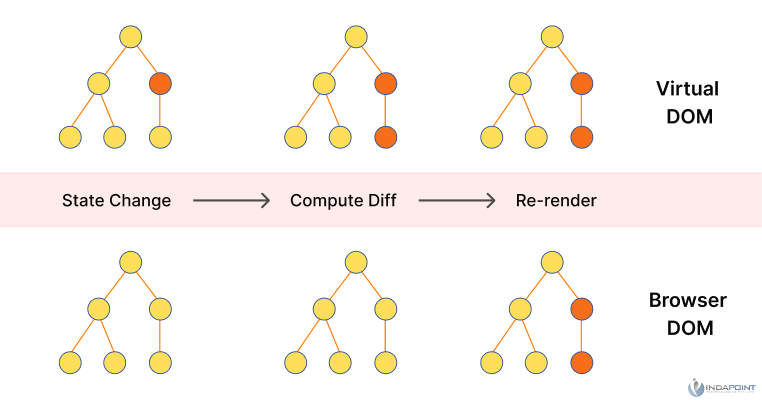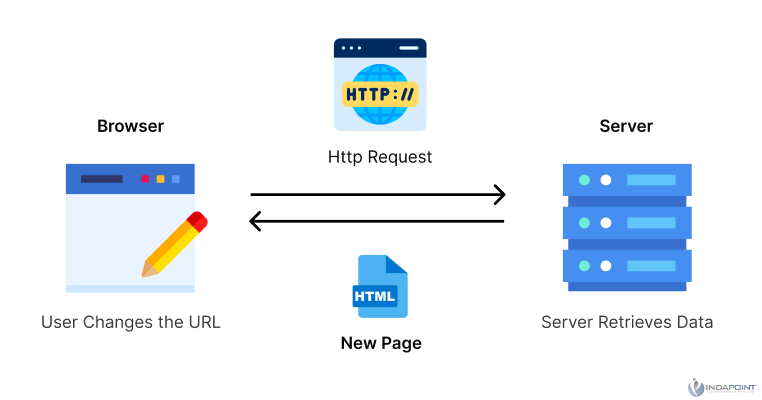A Comprehensive Guide to Using React with Redux and ReactJS Router in Your Business
October 6, 2023

This guide explores the use of React, Redux, and ReactJS Router in web development.React is a popular JavaScript library developed by Facebook for creating user interfaces for web applications. Its virtual DOM implementation provides a quick and responsive user experience. Redux, a JavaScript state container, is essential for managing complex web applications. To integrate React and Redux, create a new React project and add Redux using npm or yarn.
ReactJS Router is a crucial component for developing robust web applications. It allows for the creation of single-page applications with dynamic URLs, facilitating a streamlined user experience. React is used in e-commerce platforms, social media platforms, and SaaS solutions.
Best practices for implementing React with Redux and ReactJS Router include organizing tasks, normalizing Redux state, embracing immutable data, writing exhaustive unit tests, code splitting, and performance optimization. The choice of technology stack should be consistent with the complexity of the project, team familiarity, and long-term objectives.
A Comprehensive Guide to Using React with Redux and ReactJS Router in Your Business
In today’s fast-paced digital environment, businesses of all sizes are continuously seeking the most appropriate technology stack to power their web applications. Among the myriad of choices, ReactJS stands out as a powerful and versatile JavaScript library that has garnered immense popularity over the years. In this in-depth guide, we will venture into the world of React, investigate its seamless integration with Redux for state management, and comprehend the significance of ReactJS Router for developing dynamic single-page applications. This guide will help you make informed judgments about your technology stack, whether you are a large enterprise or a startup.
Comprehending ReactJS
Facebook developed and maintains the open-source JavaScript library ReactJS, also known as simply React. Primarily, it is used to create user interfaces for web applications. React is renowned for its component-based architecture, which enables developers to create UI components that are reusable and can be easily combined to create complex user interfaces.
React’s popularity originates from its virtual DOM (Document Object Model) implementation, which enables it to provide a quick and responsive user experience. This feature ensures that only the necessary portions of a web page are updated when the underlying data changes, thereby reducing superfluous re-rendering and enhancing performance.

Preface to Redound
As the complexity of web applications increases, managing the application’s state becomes increasingly difficult. This is where Redux enters the picture. Redux is a JavaScript state container with predictable behaviour. It provides a centralized store for your application’s state management and enforces a strict unidirectional data flow, making it simpler to debug and test your code.
Redux is especially advantageous for large and medium-sized businesses that manage voluminous data and intricate user interactions. It ensures that your application’s state remains predictable and simple to reason about, which is essential for a scalable and maintainable codebase.

Introduction to React and Redux
Let’s delve into the process of getting started with React and Redux now that we have a basic comprehension of these technologies. To get started, you must create a new React project. Here are the necessary steps:
Create a New React Project : To create a new React project, use a tool such as create-react-app. This tool offers a sensible configuration by default for your React application.
Redux can be added to your project using either npm or yarn. Execute the command below to install Redux:
- BashCopy text
- Redux is installed using npm.
This installs Redux and its prerequisites :
Create Redux Store : Define the application’s Redux store. This store will hold your application’s state and function as a single truth source.
Define Actions and Reducers: Actions represent events that can modify the state, while reducers specify how the state should be modified in response to actions.
Connect React Components : Connect your React components to the Redux store using the react-redux library. This permits your components to access the state and execute actions.
Following these methods will allow you to integrate React and Redux into your project, enabling efficient state management for your enterprise applications.
Using the ReactJS Router
In addition to React and Redux, ReactJS Router is a crucial component for developing robust web applications. ReactJS Router is a prominent client-side routing library for React applications. It enables the creation of single-page applications with dynamic URLs, thereby facilitating a streamlined user experience.
ReactJS Router allows you to assign specific URLs to various application components. This means that when a user navigates to a specific URL, the associated React component is rendered without requiring a complete page reload. This is essential for developing modern, responsive web applications.

Compared Other Technologies to React
To make an informed decision regarding your technology platform, it is necessary to evaluate alternatives. Comparing React to other front-end frameworks and libraries such as Angular and Vue.js is worthwhile, even though React is a potent option.
Google’s Angular framework is a comprehensive front-end framework. It offers a complete ecosystem for the development of web applications, including a robust template system and dependency injection. Angular is suitable for large enterprise applications, but its learning curve may be steeper than React’s.
Vue.js is a JavaScript framework that is well-known for its simplicity and adaptability. It is an excellent option for startups and small to medium-sized enterprises seeking a framework with a gentle learning curve and a lightweight footprint.
Real-world Application Examples
Consider the following real-world applications of React, Redux, and ReactJS Router to illustrate their practicality:
Numerous e-commerce platforms employ React for their front-end interfaces. React is a great option for e-commerce enterprises due to its capacity to manage complex product catalogs and user interactions.
Social Media Platforms Social media platforms frequently rely on React’s responsive and dynamic user experience capabilities. Using React, features such as real-time updates and user interactions are seamlessly implemented.
SaaS (Software as a Service) Solutions: SaaS providers use React and Redux to build scalable and feature-rich applications. Redux’s state management ensures platform-wide data consistency.
Consider these best practices as you embark on your voyage with React, Redux, and ReactJS Router :
- Organize Your Task : Maintain a straightforward project structure in order to keep your codebase organized. Separate components, actions, and reducers using folders.
- State Normalization : Normalize your Redux state to assure data consistency and enhance performance with large datasets.
- Immutable Data : Embrace immutability in Redux to prevent unintended side effects caused by state modification. To ensure reliability, write exhaustive unit tests for your React components and Redux actions and reducers.
- Code Splitting : Implement code splitting to load only the required code for each route, thereby accelerating page load times.
- Performance Optimization : To ensure a seamless user experience, profile and optimize the performance of your application.
Selecting the Correct Technology Stack for Your Business
There is no one-size-fits-all solution for selecting the appropriate technology platform for a business. Consider factors such as the complexity of your project, your team’s familiarity with the technology, and your long-term objectives.
React, Redux, and ReactJS Router provide a robust solution for businesses seeking to develop scalable, responsive, and maintainable modern web applications. However, the ultimate choice should be consistent with your specific requirements and objectives.
The conclusion
In this in-depth guide, we’ve explored the world of React, Redux, and ReactJS Router, as well as their significance in contemporary web development. We have seen how these technologies enable businesses to develop dynamic and responsive web applications.
If you’re prepared to take your business to the next level by leveraging the power of React, Redux, and ReactJS Router, our team is here to help. Contact us immediately to discuss your project’s specifications, and rest assured that we have the experience and skills necessary to bring your vision to life.





